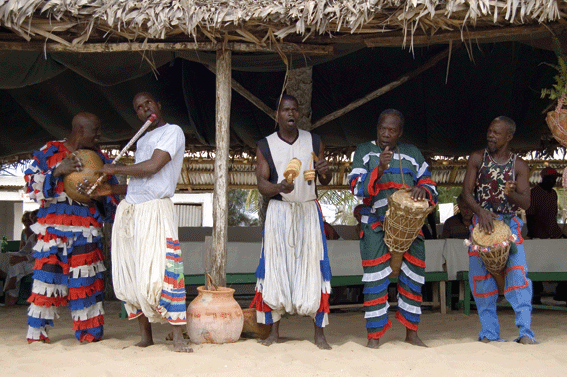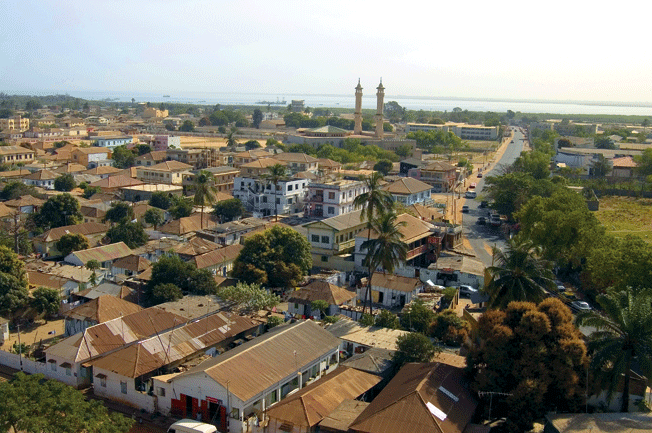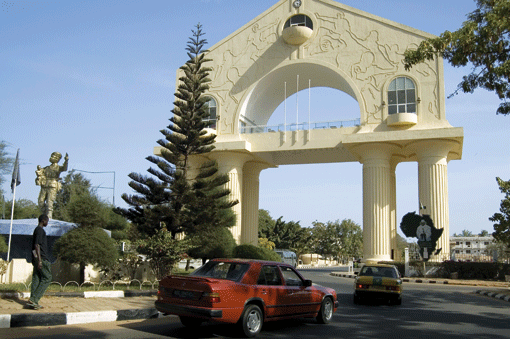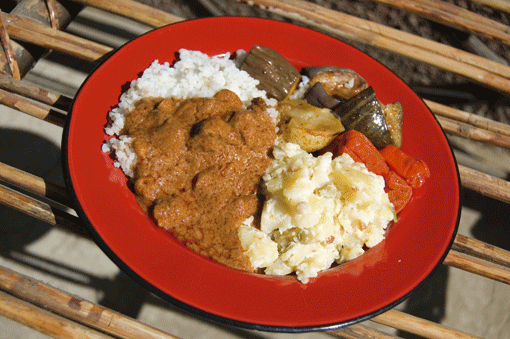
Travel
Gambia Calling

A tiny wedge-shaped country cutting into the heart of West Africa,
Gambia is bound to the river of the same name. Every winter it draws visitors
from cool northern climes
who come for the sunshine, warm weather and long golden shores.
But there is more than beach life to this ‘Smiling Coast’.
By: Veronica Maria Garbutt
Growing ecotourism means that you can now stay in lodges in mangrove swamp, savannah and deciduous forests that are home to diverse plant and animal populations. From an ornithologist’s viewpoint the place teems with exotic birds. And keen explorers can climb through the ruins of long abandoned slaving stations and discover mysterious stone circles; ancient relics of Senegambian culture.
The smallest country in Africa, Gambia is roughly 300km long and 35km wide and is surrounded by Senegal except for an 80km long Atlantic coastal strip. It is so flat that in the 400km-plus between its eastern border and the capital Banjul it loses less than 10m in elevation. Lying just west of Banjul are the coastal resorts of Kotu, Fajara, Bakau and Kololi. The dry season runs from November till May and the rainy season June to October. This is also the hottest period when temperatures can rise to 30ºC.
One of Africa’s great waterways, the River Cambia has its source in the Fonata Djalon highlands in Guinea. The waters flow towards Gambia crossing the border some 500km from its mouth. Along the way some dramatic latertites and sand cliffs can be seen. Latertites are reddish rocks with a high proportion of iron and aluminium. With no bridges and only three crossing points—at Barra, Yelitenda and Janjangbureh—the river is something of a barrier, particularly for the Senegalese who must cross it to reach their southern territory. And if you travel upcountry in Gambia you go by river.
Along the way short tracks lead you to creeks, rice fields, bushland and villages where traditional life continues as it has done for centuries. Beyond Brikama the upcountry villages and main centres of Basse, Soma and Farafenni are unaffected by the coast’s tourism. Most of Gambia’s 1.5 million population live on the riverbank strip, making it one of the continent’s most densely populated countries. The main ethnic group is the Mandinka and in the coastal area Wolofs predominate. Other tribes include Jola, Serer.
Gambia’s history can be traced back to 800 BCE when the earliest settlers, thought to be Jola ancestors, arrived. After a period under the influence of Ghana, Senegambia (Senegal and Gambia) was converted to Islam in around 1200 CE. By the 15th century the area was ruled by the Mandinka from their kingdom in Mali. Portuguese explorers reached Gambia in 1455 and established a trading post on St Andrews Island (now James Island). Later French, Dutch, English and Baltic merchant adventurers fought over trading rights in the area. After the Napoleonic wars the British established a protectorate and in 1888 a Crown Colony. Independence came in 1965.
On the economic front Gambia is something of a monoculture with 70 per cent of export earnings derived from groundnuts (peanuts). Tourism accounts for 10-15 per cent of gross national product. Such is the love of trade that it appears to be the raison d’être of Banjul and neighbouring Serekunda. The streets are lined with shops and impromptu stalls pop up everywhere. Vendors proffer goods carried on their heads, in baskets and suitcases. It’s all about closing the deal. Beyond Albert Market thousands of smallholders sell fresh fruit and vegetables from plastic laid out on the ground. And in Serekunda—the country’s largest market—all means of fish, fruit, fowl and livestock are sold and bartered daily.
Time now to explore Banjul—easily done as it is small in size hemmed in by the Tambi wetlands. Most of the population has moved out to Serekunda and only about 40,000 denizens remain permanently. The city is small enough to walk around and is centred on the 22 July Square, whence several main streets emanate, one of which leads to Arch 22. This mammoth structure is supported by eight Doric columns and if you climb to the mid-level you will encounter a museum of textiles and tools—along with a fine view of the capital.
King Fahad Mosque on Box Bar Road is the country’s largest mosque. With its twin minarets piercing the skyline this beige stucco edifice is both elegant and enormous; its immense outer courtyard has a capacity for thousands. On Independence Drive the National Museum housed in the former Bathurst Club contains a fascinating display of photos from the colonial period along with maps, documents and information about the Senegambia region.
For a taste of the past venture into Ma Cumba on Jarrow St in the old town. Still standing there are a few Krio-style houses, some still owned by families who came from Sierra Leone in the 1820s. Then head off to the craft market which lies deep with Albert Market. Bangles, drums, paintings, carvings, textiles and clothing are generally inexpensive. And after that head down to the ferry terminal, there to survey the colourful pirogues loading up before departing for Barra on the river’s northern shore.
The Atlantic coast beach resorts just beyond Banjul are a major attraction and include Bakau, Fajara, Kololi and Fajara. After Banjul, Bakau is the longest established coastal community, backed by hotels with pools, restaurants, cafés, supermarkets and shops. It is home to the Kachilaky Crocodile Pool. The main tourist development lies west of Kololi village and extends along the road leading to the coast from the Bertil Harding highway. It is known as the Senegambia strip.
Kotu is centred on the mouth of the Kolu stream and has the prettiest stretch of beach with some fine bird watching possibilities along the riverbank. Fajara nearby boasts an 18-hole golf course with green fees around the US$20 mark. Many of the holes are surrounded by ‘browns’ rather than greens as it is difficult to cultivate grass here. Caddies are also available at reasonable rates. They can also proffer excellent advice. Temporary membership of the golf club gives access to the clubhouse, tennis courts, swimming pool and other facilities.
As already mentioned, Serekunda with its bustling market is the country’s largest town, just inland from the resorts. It is a good place to get a taste of modern urban West Africa as Gambia’s energy is focused here. Basically the area is one large commercial transport and employment centre with a cacophony of diesel engines and blaring sounds day and night. Tanji which lies on the coast just south of the tourist area boasts the country’s largest fish market selling mainly bonga. Here the fish is guaranteed fresh as it is line caught and landed several times a day from the colourful pirogues. Don’t miss the atmospheric smoke houses behind the fish stalls where the female sellers drive a hard bargain! Ornithologists will surely want to make a beeline for Tanji Bird Reserve.
Several operators offer tours to Makasutu Cultural Forest, one of the country’s first ventures into ecotourism. Created by two Englishmen who originally just wanted to build a small travellers hotel the area today includes a nature trail, palm forest, mangrove swamp along a bolong (creek), award winning lodge and visitor centre where nature ceremonies are performed while guest sample a local lunch of rice, vegetables and lamb in peanut sauce. The venture employs several local people and even offers the services of a traditional herbalist and fortune teller. If you go alone be sure to hire a local guide who will detail the teeming wildlife, local customs and plant species used in construction and herbal medicine.
One of the most popular excursions is by ferry to the north banks past Barra to the area around Suffreh. This territory is famous as the ancestral home of African American writer Alex Haley who penned the book Roots. A Banjul company called Arch Tours offers an illuminating cultural tour by 4WD to a local cattle market, oyster farm, school, village and weaving collective. Visitors get to try pounding millet in a giant pestle and mortar (hard work), inspect the interior of a traditional house (dark, as there is no electricity), sample local food (not terribly sumptuous) and attend a tea ceremony around an attaya stove or wood fire. Men are also permitted to relax in the bantaba, a bamboo seating area where the business of the day is discussed.
If you have time to spare consider a trip upcountry to Janjanbureh, which until recently was known as Georgetown. During the steamboat era this was Gambia’s second town, a vital commercial post, administrative centre and êntrepot. Points of interest include the Commissioner’s Office and Residence, various warehouses and crumbling slave houses that are akin to an open air museum of the old trading days and the Freedom Tree. Some 20km from town lies the Wassu Stone Circles, intriguing remnants of ancient African cultures. The best time to visit Gambia is during the dry cool trading season which runs from December to mid-February. Happy journey!